2015 World Series
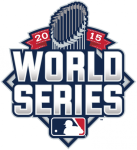
This is the most excited I’ve ever been for a World Series. It’s the most excited I’ve been for a Mets game. However, I’m nervous.
I’m nervous because these Royals are the best team the Mets will face. This is a team with no quit. It seems like they’re a team of destiny. They only lost last year because of Madison Bumgarner. They’re offense is much improved. Once they get a lead, you know Wade Davis isn’t relinquishing it. It’s hard to find a reason why they’ll lose.
Then I remembered something. These Mets are built to beat the Royals. For all the talk of the the Royals offense, they’re starters have been awful this postseason. The Mets have beat much better pitching, and they’re primed to beat up on much weaker pitching.
Furthermore, if the Mets have proven anything good pitching beats good pitching. The Cubs were a better offensive team than the Royals. They were shut down. Bumgarner shut the Royals down last year. The Mets have three aces that pitch very similarly. When I look at the matchups and the pitching, the Mets are better.
Ultimately, when making a prediction it’s not a question of how, it’s a question of when . . .
Mets in 6.
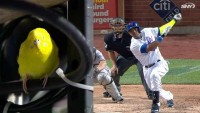
So far in the playoffs, the Mets have faced the top two 1-2 starting pitching tandems in a of baseball. I didn’t forget the Mets here. They’re a trio, but I digress. In the games started by those pitchers, the Mets are 4-2. In all other games, they are 3-0.
In the NLDS, the Mets had to face Clayton Kershaw and Zack Greinke four out of five games. In those games, the Mets averaged 1.5 runs per game and 5 hits per game. Despite this, the Mets still advanced in the NLDS behind their own terrific pitching.
In the NLCS, the Mets faced Jon Lester and Jake Arrieta just one game each due to the sweep. In those two games, the Mets averaged 4 runs per game and 6.5 hits per game. Keep in mind Greinke, Kershaw, and Arrieta are going to finish 1-3 in the Cy Young voting. The Mets were 3-2 against them. When you beat good pitching you advance in the postseason.
In the World Series, the Mets won’t face a Greinke, Kershaw, or Arrieta. In the playoff games not started by those pitchers, the Mets average 7.5 runs per game and 10.8 hits per game. While the Mets may not have the greatest numbers against some of the Royals starters, they are still facing a starting staff who is struggling in the postseason:
Royals starters: 5.56 ERA this postseason, 3rd-highest rotation ERA by a team to reach the World Series in Wild Card era (1995) @EliasSports
— ESPN Stats & Info (@ESPNStatsInfo) October 27, 2015
Furthermore, the Royals are allowing 4 runs per game and 8.5 hits per game. This shows us what we know. The Royals started haven’t been good, but their bullpen has been terrific. This means the Mets must jump on the starters early and often.
Ultimately, the Mets have been teeing off on inferior pitching. If this continues, we may see an unexpectedly offensive series. If that’s the case, the Mets will be scoring runs at a much higher rate. Hopefully, it’s a high enough rate that the Royals can’t keep up.
In any event, I don’t care how the Mets do it. I just care that they win.
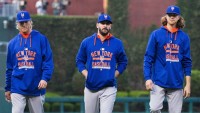
Let’s face facts. If not for Madison Bumgarner, this would be a title defense for the Royals as opposed to redemption. It took Bumgarner everything he had to help the Giants win the World Series.
In the 2014 World Series, Bumgarner went 2-0 with 1 save, a 0.43 ERA, 0.476 WHIP, and a 7.3 K/9. He basically said to his teammates, I got three; you just need to get one. In the three games he pitched in, the Royals averaged one run per game. In the other games, the Royals averaged six runs per game. That’s a huge gap.
With all the noise over the Royals hitting the 95+ MPH pitching well, I wanted to see what Bumgarner threw in that World Series:
- 93.40 MPH fastball 52.23% of the time
- 85.04 MPH changeup 3.78% of the time
- 76.25 MPH curve 15.12% of the time
- 87.46 MPH cutter 27.84% of the time
- 67.20 MPH slow curve 1.03% of the time
This shows not only how to beat the Royals but how to pitch in general. You want to establish the fastball and keep the batters off balance with the offspeed pitches. Let’s see how the Mets stud muffins compare this postseason:
- 95.86 MPH fastball 59.56% of the time
- 88.08 MPH change 11.48% of the time
- 90.29 MPH slider 14.75% of the time
- 84.01 MPH curve 14.21% of the time
- 96.23 MPH fastball 37.89% of the time
- 96.44 MPH sinker 18.01% of the time
- 86.54 MPH change 15.84% of the time
- 90.03 MPH slider 12.01% of the time
- 81.63 MPH curve 16.15% of the time
- 98.66 MPH fastball 26.64% of the time
- 98.63 MPH sinker 32.31% of the time
- 89.46 MPH change 16.16% of the time
- 87.96 MPH slider 8.73% of the time
- 81.53 MPH curve 16.16% of the time
What does this information tell us? The Mets three aces pitch similarly to Bumgarner. They establish the fastball and use the same ratio of breaking pitches to keep the hitters off balance. There are two key differences here: (1) Bumgarner is a lefty; and (2) the Royals offense is much improved.
However, keep in mind the Royals couldn’t handle Bumgarner at all last year. Now, the Mets are running out three Bumgarners out there. They will pitch in six of the seven games if necessary.
In the end, I’m not sure how the Royals can keep up their 5.9 runs per postseason game. If they want to beat the Mets they will either have to find a way or pitch much better. If they don’t do either or both, the Mets will win the World Series.
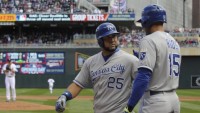
The 2014 World Series was a classic. Most that go 7 games are. This one had the added touch of having the game tying run 90 feet away and the go-ahead run at the plate.
Overall, the Royals have largely remained unchanged in their everyday lineup. There were three notable changes:
- DH: Billy Butler for Kendrys Morales
- 2B: Omar Infante* for Ben Zobrist
- RF: Nori Aoki for Alex Rios
Last year Butler hit .271/.323/.379 with 9 HR and 66 RBI. In the postseason, he hit .262/.327/.333 0 HR and 8 RBI. This year, Morales hit .290/.362/.485 with 22 HR and 106 RBI. This postseason, he is batting .268/.348/.780 with 4 HR and 10 RBI. This is a massive upgrade at the DH position.
Last year, Infante hit .252/.295/.337 with 6 HR and 66 RBI. In the postseason, he hit .255/.321/.373 with 1 HR and six RBI. Since joining the Royals and taking over for Infante, Zobrist hit .284/.364/.453. In the postseason, he has hit .326/.340/.558. Again, it’s a massive upgrade.
Last year, Aoki hit .285/.349/.360 with 1 HR and 43 RBI. In the postseason, he hit .195/.292/.487 with 0 HR and 3 RBI. In his place, Rios hit .255/.287/.353 with 4 HR and 32 RBI. In the postseason, he has hit .333/.389/.485 with 1 HR and 5 RBI. While Aoki was the better player in the regular season, Rios has been a much better postseason player.
Overall, the Royals are a much more dangerous offensive team than the team that averaged 4.8 runs per game in the playoffs and 4 runs per game in the World Series last year. So far, the Royals are averaging 5.9 runs per game. They need to because:
Royals starters: 5.56 ERA this postseason, 3rd-highest rotation ERA by a team to reach the World Series in Wild Card era (1995) @EliasSports
— ESPN Stats & Info (@ESPNStatsInfo) October 27, 2015
What this shows us is that even though the Royals have a much better offense, their pitching is suffering. It’s why the Royals practically swept through the American League last year and went the distance in the ALDS and was almost pushed to the limit in the ALCS.
The Royals will now face much better pitching and go to a pitcher’s park on the road (as opposed to Minute Maid and the Rogers Centre). It’s a dangerous offense, but the Mets pitching staff should be up for the challenge.
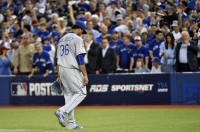
The Royals named Edison Volquez as their Game One starter. The Volquez-Johnny Cueto decision wasn’t like what the Mets faced before in the playoffs. However, it merited consideration, and the Royals went with Volquez.
This year Volquez was 13-9 with a 3.55 ERA, 3.82 FIP, 1.308 WHIP, and a 7.0 K/9. That’s where the good ends for Volquez. In his career, he is 1-4 with a 6.56 ERA, 1.543 WHIP, and a 6.9 K/9. He’s been slightly better this postseason going 1-2 with a 4.32 ERA, 1.32 WHIP, and a 8.1 K/9. In the end, what matters most is how he’s pitched against the Mets:
Curtis Granderson 3-12 with 2 HR, 3 RBI, 4 BB, 4 K
David Wright 6-25 with 1 HR, 4 RBI, 5 BB, 4 K
Daniel Murphy 3-17 with 1 RBI, 1 BB, 1 K
Yoenis Cespedes 0-2 with 1 K
Lucas Duda 3-15 with 1 HR, 3 RBI, 2 BB, 10 K
Travis d’Arnaud 0-0
Michael Conforto 0-0
Wilmer Flores 1-6 with 1 double
Juan Lagares 2-12 with 1 BB and 2 K
Combined 18-99 (.182 BA), 12 BB (.270 OBP), 1 double, 4 HR (.253 slugging), 11 RBI, and 22 K
Here’s how the bench has fared against Volquez:
Michael Cuddyer 1-6 with 1 double
Kelly Johnson 4-14 with 1 double, 2 RBI, 3 BB, 5 K
Kirk Nieuwenhuis 1-3 with 2 K
Kevin Plawecki 0-0
Matt Reynolds 0-0
Bench 6-23 (.263) with 3 BB (.346 OBP), 2 double (.467 slugging), 2 RBI, 1 K
In essence, Volquez had pitched well against the Mets. However, the Mets players have gotten to him. When the Mets have made contact, they’ve hit homeruns. It’ll be tough to hit homers in a stadium like Kauffman.
Fortunately, the Mets have better pitching than the Royals. If the Mets pitch how they should, they will need just one of those blasts to win the game, similar to the NLDS.
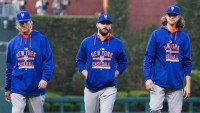
It seemed like the immediate narrative after the conclusion of both League Championship Series was the Mets biggest strength may not be a strength in the World Series:
Royals vs. 95-mph+ pitches, MLB ranks in parentheses:
BA: .284 (1st)
SLG: .432 (2nd)
K%: 15.1% (1st)Mets throw the most 95-mph+ pitches.
— Jeff Passan (@JeffPassan) October 24, 2015
As we all know, the Mets greatest strength is its good young pitching. The Mets pitching throws it hard and over 95 MPH:
- Matt Harvey – 96.54 MPH four seamer and 96.11 MPH sinker
- Jacob deGrom – 95.81 MPH four seamer and 95.49 MPH sinker
- Noah Syndergaard – 97.75 MPH four seamer and 97.78 MPH sinker
- Steven Matz 94.57 MPH four seamer
- Jeurys Familia 98.21 MPH four seamer and 97.66 MPH sinker
That’s not good news. Fortunately for the Mets, that’s not the whole story. While the Royals hit high heat well, they do not hit offspeed pitching and breaking balls well. The Royals are only hitting .220 on pitches 87 MPH and below. The highest percentage of Mets pitches this postseason was in this range.
We saw it in the NLCS. The Mets did throw their 95+ MPH fastballs, but they also mixed in their offspeed and breaking pitches early. The Mets pitching isn’t great just because of their fastballs. They’re great because they pitch great.
During the regular season, the Mets ranked second in WHIP with a 1.18 mark. They ranked fourth with a 3.49 K/BB ratio. They ranked fourth with a 3.43 ERA. They allowed the second least amount of walks, and they were sixth with a .243 batting average against. All said and done, if you want to beat the Mets pitching, you have to beat them. They’re not going to walk you, and they’re not giving up many hits.
This either lines up perfectly for the Royals or it’ll be a complete disaster. The Royals were second to last in walks. They struck out the least amount of times. They were third in team batting average. They were 24th (last in the AL) in homers, but they were 11th in slugging.
Overall, the Royals put a lot of balls in play against a staff that doesn’t allow a lot of hits. At times like this, I’m reminded of the adage of good pitching beats good hitting. It’s worked for the Mets so far this postseason.
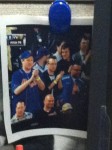
On one warm May night, Matt Harvey took the mound. I had never seen anyone as dominant as Harvey was that night. To say he was perfect was an understatement.
Through 6.2 innings, no one could touch him. He had already struck out nine batters. He walked no one. Then Alex Rios stepped to the plate. I remember leaning over to my brother and saying, “this is it right here. He’s the only one that can do it.” Then he did.
Actually, it wasn’t that simple. Rios hit the ball to an out of position Ruben Tejada, who couldn’t get enough on the ball to throw out a speedy Rios. That was all Harvey allowed. After that, he would strike out another three and pitch nine innings needing just 107 pitches. Believe it or not, it was a no decision as the Mets couldn’t score until the tenth inning.
A lot has happened since then. Harvey had Tommy John. He went from fan favorite to villain to fan favorite again. Rios has changed teams twice in the hopes of making the postseason. He did this year. In Game One, he faces off against Matt Harvey for the first time since that fateful at bat.
Yet again, Alex Rios stands in the way of the Mets making history. It’s time to rewrite the ending.
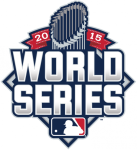
If there’s one thing that drives me crazy every year, it’s position by position breakdowns. I see it with the Subway Series. It is done with the playoffs. Anthony Castrovince of MLB.com did one of these. It was well thought out and put together. However, it really doesn’t mean anything.
I don’t say this to diminish his work. I’m just tired of the story. I’ve seen the feedback to the breakdown. The biggest argument people seem to have is Lorenzo Cain as being a better CF than Yoenis Cespedes. The focus there is misplaced and not just because he was right. It’s misplaced because Cain doesn’t battle Cespedes. No position player battles another one unless Chase Utley is involved.
Think about any position to position breakdown you might see. Does it really matter if someone has Wade Davis or Jeurys Familia as the better closer? Think about it. Even if Davis is a better closer, do Mets fans really think Familia is going to blow a save because Davis is better? Are the Mets going to lose this series because the Royals have a better SS? Are the Mets going to win because they have the better RF? Of course not.
The Mets will win or lose because of matchups and in game maneuvers. The Mets will win because they have the better pitching. The Mets may lose because the Royals have superior team defense, speed, and bullpen. This is what people should analyze.
It’s exactly what I did in the NLDS and NLCS in predicting a Mets victory. It’s the right way to do it. I’ll have a prediction tomorrow. I hope the numbers again (and not just my heart) will point to the Mets
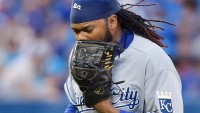
Sometimes, there’s no rhyme or reason for things. I think this sums up Johnny Cueto‘s 2015 season. He went from a hitters’ ballpark with poor defense to a pitchers ballpark with terrific defense and got worse. It doesn’t make sense especially when you consider he left the best division in baseball for one of the worst.
With the Reds, Cueto averaged 6.2 innings per start going 7-6 with a 2.62 ERA, 3.20 FIP, 0.934 WHIP, and a 8.3 K/9. With the Royals, he averaged 6.0 innings per start with a 4.76 ERA, 4.06 FIP, 1.461 WHIP, and a 6.2 K/9. Sure, he was incredible in the clinching game of the NLDS, but his two other starts were terrible. In Game Three of the ALCS, he took the loss allowing six hits, eight earned, four walks, and two strikeouts over two innings.
Historically, Cueto hasn’t faired well against the Mets either. In his career, he is 3-4 against the Mets with a 4.02 ERA, 1.369 WHIP, and a 10.0 K/9. At Citi Field, he is slightly better with a 2-2 record, 3.60 ERA, 1.267 WHIP, and a 10.5 K/9. The Mets will face him at Kauffman Stadium in Game One. There he is 3-5 with a 3.88 ERA, 1.294 WHIP, and a 6.9 K/9. He’s prime to get hit by the Mets. The only issues is how do these Mets hit him?
Here’s the numbers against the presumed Game One starting lineup:
Curtis Granderson 3-12 with 2 HR, 3 RBI, 4 BB, 4 K
David Wright 6-25 with 1 HR, 4 RBI, 5 BB, 4 K
Daniel Murphy 3-17 with 1 RBI, 1 BB, 1 K
Yoenis Cespedes 0-2 with 1 K
Lucas Duda 3-15 with 1 HR, 3 RBI, 2 BB, 10 K
Travis d’Arnaud 0-0
Michael Conforto 0-0
Wilmer Flores 1-6 with 1 double
Juan Lagares 2-12 with 1 BB, and 2 K
Combined 17-89 (.191 BA) with 12 BB (.287 OBP), 1 double, 4 HR (.337 slugging), 11 RBI, and 21 K
Here’s how the projected bench has hit against him:
Kelly Johnson 1-6 with 1 HR, 2 RBI, 2 BB, 1 K
Michael Cuddyer 1-6 with 1 double
Kirk Nieuwenhuis 1-3 with 2 K
Kevin Plawecki 0-3 with 1 K
Matt Reynolds 0-0
Bench Combined 3-15 (.200 BA) with 2 BB (.294 OBP), 1 double, 1 HR (.467 slugging), 2 RBI, and 4 K
In case the Mets make a roster change, here’s Uribe’s numbers:
Juan Uribe 2-6 with 1 double, 2 RBI, 2 K
Overall, the Mets have not hit Cueto well. However, prior to Cueto being a Royal no one did. Just last year, Cueto limited batters to a triple slash line of .195/.261/.313. So, where’s the discrepancy in all this? Where’s the hope for Mets fans tomorrow? It’s that Cueto’s numbers are actually no fluke at all. In his career, as the year progresses, he tired and gets hit harder:
March/April .208/.269/.349
May .222/.282/.364
June .235/.298/.367
July .252/.324/.365
August .243/.305/.412
September/October .275/.335/.426
Given these numbers, it’s clear that Cueto can be hit . . . hard. This gives the Mets a Game One advantage. When the goal is to split in Kansas City, the Mets need to utilize this advantage. I think they can and will.
